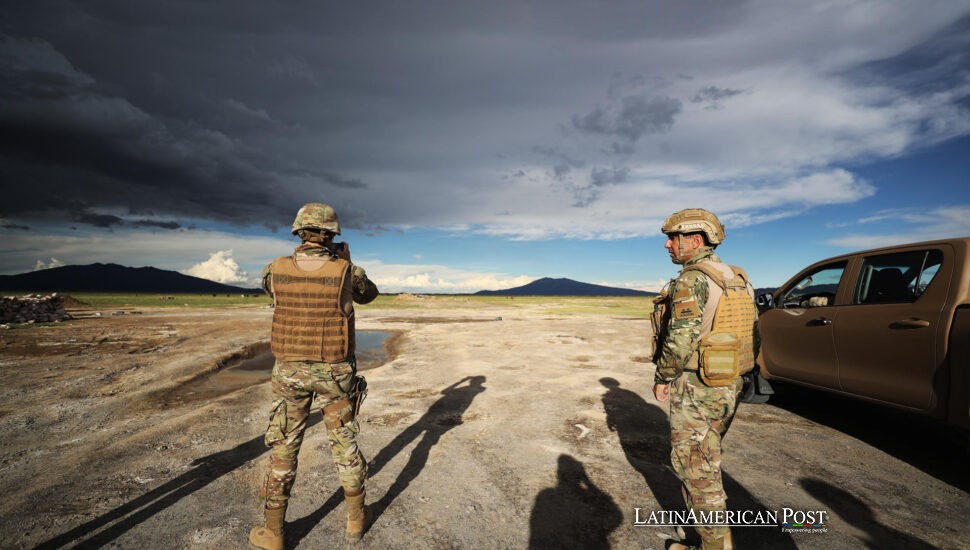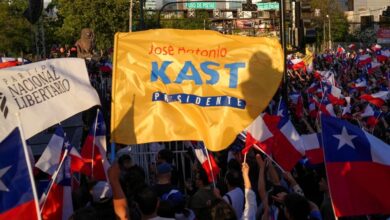Chile Tightens Border Policies, Concern Grows for Migrants

For six months, Chilean authorities have closed crucial facilities near the Bolivian frontier, hindering aid for irregular migrants. At the same time, new protocols allow “refouling” back into Bolivia. Advocates fear these measures endanger vulnerable families rather than ensuring order.
An Overhauled Policy on the Northern Frontier
In the dusty highlands of Colchane—some 2,000 kilometers north of Santiago—Chile drastically reduced the capacity to shelter migrants seeking a fresh start. According to EFE interviews with local officials and refugees, the government dismantled two Dispositivos Transitorios (DTs) since last September, effectively eliminating services that once offered first aid, food, and a temporary haven for those crossing into Chile through remote desert crossings.
Regional delegates attribute the closures to “a sustained drop in arrivals” and a new bilateral agreement with Bolivia that empowers Chilean border patrols to “reduce,” or send back, individuals caught entering through unofficial routes. The changes show that President Gabriel Boric wants tighter control of migration. This is a surprise because his first position seemed more open. Ivonne Donoso, the government delegate for Tarapacá, stated that they are using an approach that is more focused and faster. They do not want people to rely on the facilities for a long time.
Critics, however, see an urgent crisis unfolding. Migrants like Roberto, a 25-year-old Venezuelan, recounted for EFE a perilous trek across the altiplano wetlands at midnight, with near-zero temperatures and no water. “We were conned by coyotes, crossing putrid ponds in pitch darkness,” he said. “I don’t recommend it to anyone, especially with kids.” Now, he waits at the newly designated Centro Migratorio Irregular (CMI)—the scaled-down successor to the decommissioned shelters.
At-Risk Families Face Shifting Support
As a result of this policy overhaul, families who once had recourse to emergency assistance find fewer options. Indiana García, another Venezuelan migrant, told EFE she arrived by foot with her husband and toddler in tow: “We carried heavy backpacks, my baby on one side, breathing so thin in the cold high altitudes.” She is relieved to have found any refuge at all but complains that “the old safety net” is gone, forcing vulnerable newcomers to scour for help in more precarious conditions.
Many local organizations view the closures as a “regression.” They warn that the changes will just push migration flows underground, aggravating potential exploitation by coyotes or smugglers. “Without safe reception points,” said Karina Fauste, director of the Madre Josefa Foundation in Tarapacá, “families risk new routes that might be deadlier, or they could face trafficking, harassment, and violence.” She explained that in the past, the DTs offered short-term shelter, basic medical checks, and guidance for legal procedures—vital for people crossing in near-freezing desert nights.
Meanwhile, fiscal authorities caution that the border is so vast and mountainous that it remains “porous” despite the hype around newly deployed patrols. Tarapacá’s regional prosecutor, Trinidad Steinert, explained to EFE that “the climate alone can kill them. Yet if you’re desperate, you’ll attempt it anyway.” She labels the zone “vulnerable,” meaning it requires consistent humanitarian and security infrastructure rather than abrupt rollbacks.

Uncertain Outcomes and Calls for Balance
In the face of restricted official accommodation, migrants now gather at Colchane’s newly formed CMI. The environment there feels more “like a waiting room than real assistance,” said human rights defender Anuar Quesille. “The 2021 system was about humanity and comprehensive relief. Now it’s scaled back, risking lives.” Even officials from the International Organization for Migration (IOM) have expressed concerns that the new measures could devolve into an endless cycle: those turned back to Bolivia might simply attempt to re-cross repeatedly, in riskier ways.
Chile’s government insists it must protect national security, echoing statements from the foreign minister, who calls the Haitian meltdown and Venezuelan exodus a “direct threat.” Official data shows irregular migration skyrocketed from 10,000 in 2018 to nearly 338,000 last year—a fivefold jump. Now, authorities believe “robust” deterrence can slow arrivals, citing 16 million dollars of added investment in fences, aerial surveillance, and logistical coordination with Bolivian counterparts.
Still, many question if fortifying the border, shuttering shelters, and stepping up deportations truly solve root problems. Venezuela’s deep economic and political crisis, for instance, continues propelling the masses outward. Meanwhile, climate extremes and gang violence in other Latin American countries also spur movement north. Roberto, seated outside a half-empty facility, remains unsure of his next step. “I guess they might send me back. But we came this far—I’ve risked everything for my family.”
Experts call for a balanced policy that recognizes both public security and the fundamental rights of migrants. Fauste’s organization already invests in “urgent bridging solutions,” like short-term shelters and counseling. “Even if official shelters vanish, it’s immoral to just let them roam. We can’t close our eyes,” she told EFE. She expresses the desire for the state to rethink a humanitarian passage or another plan. The intent is for immediate safety and responsible immigration law application.
Also Read: Argentina Publishes Nazi Files Prompting Stark Historical Reflections
With the sun’s descent in the highlands, the stream of recent arrivals goes on, though less full now. Soldiers are on guard. They are observing the horizon. Within these changes, one question resonates: will Chile’s new approach reduce chaos, or will a surge of clandestine crossings produce a more dangerous environment? Already, day by day, families cling to ephemeral hopes, and local communities brace for what tomorrow might bring. “We see the short-term effect—fewer people in the open,” said a caretaker from a local NGO. “But the cost for those forced to hide in the cold is immeasurable.”





